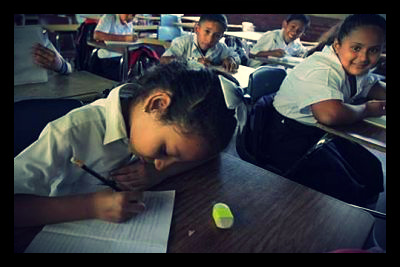Education in Latin America

There are many challenges facing education in Latin America. Many schools are not properly equipped with current textbooks or any lab equipment. Even worse, some schools do not even have proper infrastructure, and students are forced to attend a schoolhouse with a leaky roof or holes in the wall.
These physical problems are directly responsible to the startling statistics about students in the region of Latin America. According to the Inter-American Development Bank, only 10% of the region’s poorest students are performing at their grade level. Only 40% percent of students graduate from secondary school, and according to the Brookings Institution’s Center for Universal Education, international comparisons have Latin America ranked near the bottom in education.
What is being done to combat these trends?
One method of change to education in Latin America are initiatives to upgrade outdated curriculum models. Docente al Dia is an online platform that seeks to give teachers access to new curriculums and lesson plans. It also acts as a social media community, a Facebook for teachers. This will allow Latin American educators to collaborate on ideas, and connect the education system in a way not previously possible.
The Central America Foundation for Rural Education Development (CAFRED) is an organization that identifies rural communities lacking proper schooling facilities and builds healthy, safe, and sustainable schoolhouses. CAFRED also sponsors a variety of education initiatives to create an environment of learning often denied to rural communities in Latin America. One example is the “Professional Teacher Development Program” which provides much needed professional development for rural teachers by giving lessons in sensitivity and Individual Education Programs.
A positive statistic for Latin American students is that by 2015, 30 million students should have access to an electronic device to support learning. This is one of the many projects and topics championed by the Inter-American Development Bank. The Bank endorses five ‘dimensions of success’ in education: high expectations for student learning, students should enter the system ready to learn, all students having access to effective teachers, schools having adequate resources, and all graduates having the skills necessary to contribute to the labor market.
Access toeducation is a necessary component for producing global citizens and engaged consumers. Stimulating education in Latin America should therefore be a top priority for world leaders.
– Taylor Diamond
Sources: Inter-American Development Bank, Brookings Institution
